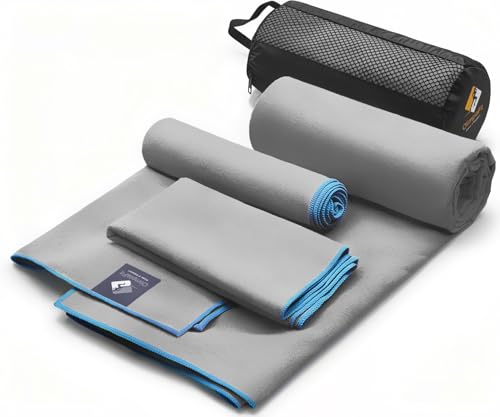Race day excitement is hard to beat, but the travel chaos that comes with it can quickly drain your energy. I’ve been there—rushing through crowded airports or stuck in traffic, feeling my stress levels spike before the race even starts. Over time, I’ve picked up some simple travel hacks that keep me calm and focused so I can enjoy the day to the fullest.

Whether you’re heading to your first race or your fiftieth, a little planning can make a huge difference. From packing smart to navigating transportation smoothly, these tips help me breeze through travel hassles and arrive ready to run. Let me share what’s worked for me so you can stay relaxed and race-ready too.
Preparing for Race Day Travel
Effective preparation eases travel stress and helps maintain focus on race performance. I emphasize careful planning and smart packing to keep racers calm and ready.
Planning Your Route in Advance
Mapping the route well ahead cuts surprises on race morning. I check traffic patterns, public transit options, and parking availability close to the venue. Choosing alternate routes guards against delays caused by accidents or roadwork. Timing arrival to avoid peak congestion ensures a smooth start. I recommend running a test drive if possible, especially for races in unfamiliar locations. Confirming shuttle schedules or rideshare availability adds flexibility. Advanced planning keeps your mind on the race, not on logistics.
Packing Essentials for Comfort and Convenience
Packing the right gear reduces pre-race anxiety and last-minute scrambling. I prepare a dedicated race bag including my tri kit, goggles, helmet, and race nutrition, all organized in separate compartments. Adding comfort items like a travel pillow, compression socks, and noise-canceling earbuds helps combat fatigue from travel. Hydration packs or refillable bottles maintain fluid balance even before the race. I always carry weather-appropriate layers and race documentation, such as bib and ID. Having chargers and backup cables for electronics keeps essentials operational. Thoughtful packing supports physical readiness and mental calm leading up to race day.
Stress-Reducing Travel Tips
Effective travel preparation boosts calm and focus on race day. I break down key strategies that save time and reduce stress before triathlon events.
Choosing the Best Transportation Options
Selecting transportation optimizes energy for race performance. I recommend prioritizing direct routes to the venue. Driving works well if parking is accessible and confirmed. Using public transit can cut costs and avoid parking hassles but requires checking schedules and delays ahead. For unfamiliar areas, rideshares provide flexibility, especially when shuttles run on tight schedules. Planning transport choices based on race timing and location reduces last-minute stress and conserves mental energy.
Managing Time to Avoid Rush and Anxiety
Time management prevents anxiety and allows smooth transitions on race day. I set alarms early enough to accommodate unexpected delays during travel. Arriving 60 to 90 minutes before check-in or race start gives leeway for warming up and final gear checks. Buffer time helps overcome traffic jams, parking searches, or equipment troubleshooting without panic. I advise syncing travel times with event schedules, including pre-race meetings or mandatory briefings. Organizing each step of your trip in advance grants control and keeps nerves steady before competition.
Health and Wellness on the Go
Maintaining health and wellness during race day travel plays a major role in performance and stress management. I focus on strategies that keep energy steady and calm intact from pre-race travel through the start line.
Staying Hydrated and Nourished
I emphasize hydration from the moment I start moving until race time. Drinking water consistently prevents fatigue and sharpens mental focus. I carry a reusable water bottle and sip regularly, especially if air travel or dry conditions affect hydration levels.
For fuel, I select familiar snacks that digest easily and pack balanced portions of carbohydrates, protein, and healthy fats. Examples include energy bars, bananas, and mixed nuts. Timing my meals to avoid going too hungry or too full ensures steady energy without bloating. If time allows, I eat light, nutrient-rich meals rather than heavy or unfamiliar foods.
Tracking hydration and nutrition keeps my body primed and avoids the common pitfalls of travel-induced fatigue or stomach upset. I recommend racers plan hydration and nutrition the same as for training days.
Simple Exercises and Breathing Techniques for Relaxation
Movement and breathing exercises help control nerves and improve circulation during travel. I practice gentle stretches like shoulder rolls, neck stretches, and hamstring lengthening when waiting or seated for long periods. These increase blood flow and reduce stiffness without tiring muscles.
Deep diaphragm breathing calms the nervous system and lowers cortisol levels. I inhale deeply through the nose for about four seconds, hold for four, and exhale slowly through the mouth for six to eight seconds. Repeating this cycle for several minutes restores focus and relaxes tension.
If small space allows, I do light bodyweight exercises such as calf raises or glute squeezes to keep muscles activated. Integrating these movements inches away from constant sitting prevents stiffness and stress buildup.
Applying these hydration, nutrition, movement, and breathing tactics to race day travel builds a physical and mental foundation that supports peak triathlon performance.
Using Technology to Simplify Travel
Technology plays a crucial role in easing race day travel stress. Using the right apps and tools cuts through confusion and keeps you on track from start to finish.
Apps for Navigation and Traffic Updates
Navigation apps like Google Maps and Waze provide real-time traffic data and route suggestions. I rely on these to spot traffic jams, road closures, or accidents before they slow me down. Customizing alerts for race location traffic patterns lets me adjust my departure time or select alternate routes quickly. If unfamiliar with the area, satellite view and street images help visualize parking zones and finish line access. For public transit, apps like Transit or Citymapper map out schedules and delays so I can avoid last-minute surprises. Using these apps ensures smooth movement to the race venue without wasting energy on unexpected detours or waits.
Tools for Tracking Race Day Schedules
Scheduling apps such as Google Calendar or specialized race apps help keep race day events and logistics organized. I input start times, transition openings, shuttle departures, and warm-up periods with reminders set well in advance. Syncing calendars across devices lets me access event details and alerts on my phone, tablet, or smartwatch. Race-specific apps often provide live updates on race conditions, heat times, and any last-minute changes. Using these tools means I stay fully informed throughout race day and reduce the stress caused by forgotten timings or missed announcements. Clear schedule tracking creates a mental space focused on performance rather than logistics.
Creating a Relaxing Atmosphere During Travel
« Gear Cleaning Hacks for Longevity: Easy Tips to Keep Your Outdoor and Triathlon Gear Lasting Longer
Volunteering at a Triathlon: Your Ultimate Guide to a Rewarding Race Day Experience »
Setting a calm tone during travel plays a key role in arriving race-ready without stress. I focus on small details that create comfort and peace from the moment I leave home.
Music and Podcasts to Calm Your Mind
I rely on curated playlists and selected podcasts to keep nerves in check while traveling. Instrumental tracks or mellow beats help me maintain a steady breathing rhythm and stay relaxed on buses, planes, or in traffic. Podcasts on topics unrelated to racing provide a refreshing mental break, allowing my mind to reset instead of fixating on performance pressures. If anxiety creeps in, guided meditation apps with short sessions help me recenter quickly without interrupting my travel schedule.
Comfortable Clothing and Gear Choices
I always prioritize comfort with soft, breathable clothing layers that adjust to changing cabin or outdoor temperatures. Moisture-wicking fabrics prevent chills or overheating during long waits. Supportive, cushioned shoes reduce foot fatigue when walking through terminals or shuttle stops. I keep a lightweight hoodie or scarf handy for added warmth, plus sunglasses and a hat to protect against glare. Bringing only essentials in an organized carry-on bag limits fumbling and hassle, which ensures mobility and calm throughout the journey.
Conclusion
Traveling on race day doesn’t have to be a source of stress. With a bit of planning and the right mindset, you can turn travel time into a moment of calm and focus. I’ve found that small adjustments—whether it’s packing smart, using helpful apps, or simply choosing comfy clothes—make a big difference in how I feel when I arrive.
Remember, the goal is to arrive relaxed and ready to perform your best. When you take control of the travel experience, it frees up energy to concentrate on the race itself. I hope these hacks help you enjoy smoother, more enjoyable race days ahead!










